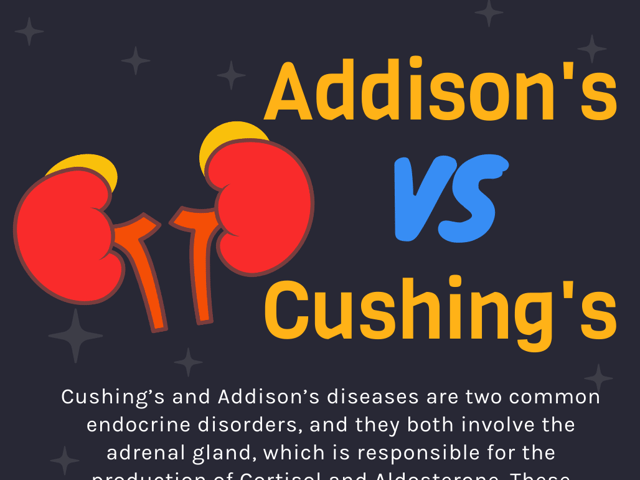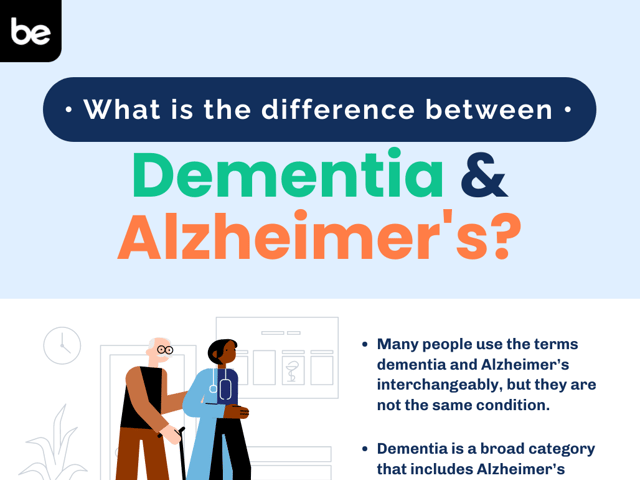
The Differences Between Cushing’s and Addison’s Diseases
Cushing’s and Addison’s diseases are two common endocrine disorders, and they both involve the adrenal gland, which is responsible for the production of cortisol and aldosterone. These disorders basically are each other’s opposites.
Cushing’s Disease Basics
Cushing’s is marked by excessive levels of cortisol, and this can be caused by external forces such as glucocorticoid therapy or internal forces such as a tumor producing adrenocorticotropic hormone (ACTH) causing excess cortisol production.
Addison’s Disease Basics
On the other hand, Addison’s Disease is caused by low levels of cortisol and aldosterone. Addison’s Disease is usually caused by an autoimmune disease that damages the adrenal gland.
Symptoms of Cushing’s Disease
As a result of high cortisol levels, Cushing’s presents itself with weight gain (especially in the trunk of the body), high blood pressure, “moon face,” hyperglycemia, a fat pad on the back referred to as a “buffalo hump.” Think of King Henry VIII, as many people speculate that he suffered from Cushing’s.
Treatment for Cushing’s Disease
The treatment of Cushing’s depends on the cause. If the excess cortisol is due to steroid medications, the medication should be stopped or at least the dosage decreased. If the cause is related to an internal source like a tumor, this internal source should be eliminated.
Symptoms of Addison’s Disease
On the other hand, the symptoms of Addison’s Disease are weight loss, low blood pressure, hypoglycemia, fatigue, and skin hyperpigmentation. John F. Kennedy suffered from Addison’s Disease, which caused his skin to be more bronze in color.
Treatment for Addison’s Disease
The treatment for Addison’s Disease is lifelong replacement therapy of the deficient hormones using corticosteroids or a mineralocorticoid or both.

Keep Reading

National Council Licensure Examination-Practical Nurse Blog
How Long Should I Study for the NCLEX-PN?
For aspiring nurses, the NCLEX-PN is a critical hurdle on the path to b…

National Council Licensure Examination-Practical Nurse Blog
How to Become an LPN
Would you like to average $30 dollars per hour in a rewarding full-time…

National Council Licensure Examination-Practical Nurse Blog
What Is the Difference between Dementia and Alzheimer’s?
Many people use the terms dementia and Alzheimer’s interchangeably, but…